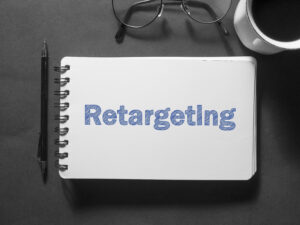Did you hear about the Malaysia Digital Economy Week in Johor Bahru last month? It’s all about levelling up how we, as businesses, interact with the digital landscape. What stuck with me from that event was this: JB businesses, especially SMEs, have so much potential with Google Search Ads. But here’s the thing: not everyone’s doing it right. Some blast out their ads everywhere and hope for the best. Spoiler: That doesn’t work in 2025.
If you’re a JB/SG business trying to stay ahead, here’s how Google Search Ads can actually bring you sales (without wasting half your budget)!
1. Broad Match Saves the Day (With Negatives)
So let’s talk broad match keywords. What are they, and why’s everyone hyped about them?
Say you’re running a plumbing service in Johor Bahru and you’re using Google Search Ads to get leads. Broad match keywords are like casting a wide net; you’re not just showing up for people who type “Plumber Johor Bahru” exactly, but also for folks searching stuff like “JB pipe fix” or “leaking tap help near me.” Even if the wording’s messy or random, your ad still gets in front of them. That’s the magic of Google Ads.
Now, you might be thinking, “Isn’t broad match too general? Won’t it eat up my budget?” Fair point. But here’s the kicker: Google Ads are way smarter now. They’ve gotten better at figuring out intent, so with the right setup (like adding negative keywords), you’re not just throwing money into the void.
Let’s say you’re targeting “plumber services” and you pair that broad match with a solid list of negative keywords like “DIY,” “job openings,” or “how to become.”
Now you’re filtering out all the noise. You’re not wasting clicks on people looking to fix stuff themselves or hunting for a job, BUT you’re showing up for the ones who actually want to hire someone. That’s real money walking through the door.
Take a look at the scenario below:
You are targeting Johor Bahru people for your plumbing service via a Google Ads Search campaign.
Broad Match Keywords:
- “Plumber Johor Bahru”
- “Pipe repair service”
These help you show up for searches like:
- “JB leaking pipe help”
- “Fix water issue near me”
- “Emergency plumber near Larkin Height”
Even if people type the queries in weird ways, chances of your ads showing up. Amazing, isn’t it?
How about Negative Keywords?
Well.. adding those unrelated terms such as:
- “DIY”
- “Job vacancy”
These block your ad from showing up for:
- “how to DIY pipe repair”
- “plumber job opening in JB”
So you’re not wasting your precious ad budget on people who aren’t looking to hire your service.
2. Stop Tossing Random Keywords; Group by Intent Instead
Here’s an example of a mistake I see all the time: people cramming every keyword they can think of into one group. It’s a disaster because Google doesn’t know what’s relevant. Instead, try grouping your ads by what customers actually want:
- Brand Searches: Like people hunting down your business by name (e.g., “Dermoaustin Clinic”).
- Category Searches: Something they wanna buy/service they need, like “skin tightening Johor Bahru.”
- Pain-Point Searches: Target people in problem mode, i.e., “Acne treatment JB.”
- Location Searches: Hyper-local genius like “Aesthetic clinic Mount Austin.”
When you organise things by intent, suddenly Google starts rewarding you with better ad placements, and it feels like magic. But it’s not really magic. Just a good ad planning strategy.
3. Let Google Do the Ad Writing (Almost)
Writing your own ad copy feels like the best move, right? You get to say exactly what you want. But honestly, letting Google do it for you isn’t that bad. You can just use Responsive Search Ads (RSAs) and let it figure things out.
RSAs sound kinda fancy but they’re just a time-saver. You throw in a bunch of headlines, a few descriptions, and Google mixes them up and tests what works best. Super useful when you don’t have time to keep tweaking stuff.
If you’re running a biz in JB, try stuff like:
- H1: Shout your name loud and clear (“Stylex Hair Spa JB”).
- H2: Add something they care about (“20% Off Haircuts This Month”).
- H3: Drop some proof of why you’re the best (“200+ Glowing Reviews in JB”).
- Descriptions: Maybe adding something like “Call now for quick hair treatment booking”.
You might say, why not pinning down the headlines. Well, not everything needs to be pinned down. Let Google Ads play around with the rest, unless you have legal claims or brand guidelines to protect, then lock those down.
Otherwise, let the algorithm do its thing and learn what works. You’ll be surprised how often it finds buyers you didn’t even think to target.
4. Assets: The Secret Click Magnet
Here’s the deal: customers click on ads that look complete. And in 2025, an ad needs more than just a headline. Think sitelinks (“See Our Pricing,” “Visit Us in Taman Molek”) or structured snippets listing out your services.
Bonus points if you add images like before-and-after shots of your product or services, which will definitely perform well in industries like beauty or interior design.
When you include your ad with assets, it doesn’t just look better, but it actually gets shown to more people because Google rewards “richer” ads with better rankings. And when you’re awarded by a better ad ranking, expect to see some lower cost-per-click. Who doesn’t want that?
5. Don’t Skip the Landing Page Check
This is where a lot of people mess up. They hype up something incredible in the ad, then the landing page is just… meh. Like if you say “Free Consultation” in your ad, your landing page better shout it too. Big bold text, front and centre. If not, people bounce. They’re gone.
Seriously though, keeping your message consistent between the ad and the page can boost your Quality Score and save you money. Don’t skip it. It’s not just about looking nice, but it’s about not confusing people.
If your ad says one thing and your landing page shows or says something else, it feels sketchy. People will get even more confused about what you offer to them. Eventually leading to a scenario where your potential thinks it’s sketchy. When they don’t trust it, they won’t convert or pay. Simple as that.
So yeah, keep it tight. Make sure your offer is clear. And don’t bury your CTA at the bottom like it’s a secret.
6. Weekly Homework: Search Queries
I know, I know… one more thing to check, right? But seriously, if you’re not looking at your Search Terms Report every week, you’re basically burning money. That thing’s a goldmine.
You’ll spot keywords that are actually working like real winners, and you can break them out into their own ad groups. And you’ll catch the junk too, stuff like “how to become an electrician” or “DIY wiring.” If the intent doesn’t match your offer (like you’re running a legit wiring service, not a free tutorial), just chuck those into your negative list and move on.
Like if you’re a JB electrician and “fast repairs” keeps showing up, that’s your cue. Build ads around it, tweak your landing page, and go all in. Don’t let good stuff sit there collecting dust.
Your best keywords are already in your account. You just gotta dig a little.
7. Be Bidding Smart, Not Lazy
Lastly, bidding. Can we talk about how people slap on “Maximise Conversions” immediately and wonder why it’s not working? Start slowly and use “Maximise Clicks” to build some data, then graduate to more innovative strategies, such as Target ROAS, once you have something to go on.
At the start, it’s all about learning what works for your audience. Nobody’s an expert on Day 1. Not even AI. You need clicks, you need patterns, you need to see what kind of search terms are pulling in actual leads. Once you’ve got that, then yeah, go ahead and switch to conversion-focused bidding.
But jumping straight into “Maximise Conversions” with zero data is like trying to win a race without knowing the track. Let the system learn, feed it some signals, and then let it optimise. That’s how you get results that actually stick.
How JB & SG SMEs Can Win with Google Ads in 2025
Honestly, this year’s all about intent. You gotta be smart with how you set up your Google Ads. Whether it’s cleaning up your keyword groups or making sure your landing page actually makes sense, it matters. Rich assets, clean structure, and just checking in weekly beats the whole “throw stuff and hope it sticks” approach every time.
So, are you ready to level up your Google Ads game? Follow this playbook and you’ll start seeing real results. Digital Johor Bahru’s buzzing, SG’s moving fast, and the leads are out there. The only question is, are you showing up or still sitting on the sidelines?







